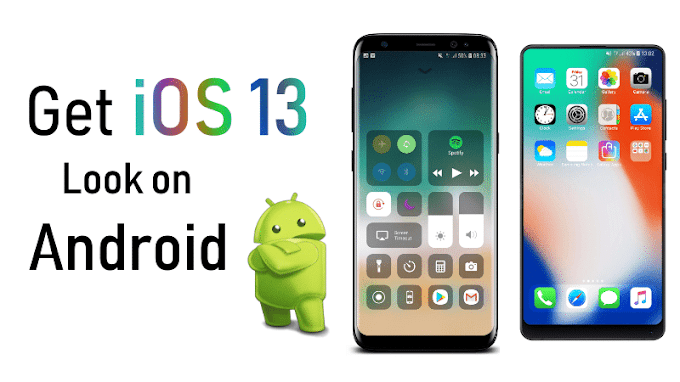Do You Know How Steve Jobs “Acquired” iPhone Trademark From Cisco?
Being persistent helped Steve Jobs get the “iPhone” trademark from Cisco
The moment Apple introduced its first model of iPhone at the Macworld Conference & Expo in San Francisco in January 2007, it dictated the evolution of smartphone industry. Today, Apple has become one of the top smartphone manufacturers in the world. Thanks to iPhone that has become a household name around the world.
While many of us take pride in owning the iPhone and flash it around, does anyone know how the “iPhone” get its name? Several theories have floated around this question, however, the most popular answer to this remains that Steve Jobs, the late co-founder and former CEO of Apple, had actually “acquired” the iPhone trademark from Cisco Systems, the worldwide leader in IT and networking. Well, not really!!!
So, how did Apple manage to convince Cisco Systems to do away with the iPhone trademark?
When Apple decided that it wanted to name its handset the “iPhone” and launch it in 2007, it was completely aware that Cisco owned the trademark of that name. At that time, Cisco had an internet-based handset of the same name. Cisco had obtained the “iPhone” name through its acquisition of a company called Infogear in 2000, which had a product line called iPhone. Cisco used the name for its dual-mode cordless VoIP (voice over internet protocol) network phones.
According to Adam Lashinsky, the author of the book “Inside Apple” written in 2012, said that Jobs decided to approach Charles Giancarlo, a former Cisco executive, for the ownership of the name. Knowing that it was not going to be an easy task to convince Giancarlo to give up on the name, and that Cisco was a bigger company than Apple at that time, Jobs kept on persisting, trying to use some charm and following up more aggressively with Giancarlo. When Giancarlo refused to part with the name, Jobs decided that Apple would go ahead with the launch, and fight Cisco in court.
Apple went ahead with the launch of the product with the name “iPhone” forcing Cisco to file a lawsuit in a California federal court against Apple for trademark infringement, unfair competition, false description and injury to business reputation. Apparently, Cisco and Apple had been in negotiations for 2 years over the issue but had not signed a licensing agreement before the iPhone launch at Macworld.
At the time, Cisco’s Mark Chandler Cisco Systems’ General Counsel had said:
“Cisco entered into negotiations with Apple in good faith after Apple repeatedly asked permission to use Cisco’s iPhone name.
“Today’s iPhone is not tomorrow’s iPhone. The potential for convergence of the home phone, cell phone, work phone and PC is limitless, which is why it is so important for us to protect our brand.”
However, after Cisco filed the lawsuit, lawyers and executives from both the sides were forced to negotiate. The trademark-infringement lawsuit was settled with the agreement that allowed Apple and Cisco to use the iPhone brand on their own products. Also, it allowed both the companies to explore opportunities for interoperability in the areas of security and of consumer and business communications.
Read the excerpt below from Lashinsky’s Book that unfolds the turn of events:
“Giancarlo fielded a call directly from Steve Jobs. Steve called in and said that he wanted it, Giancarlo recalled. He didn’t offer us anything for it. It was just like a promise he’d be our best friend. And we said, ‘No, we’re planning on using it.’ Shortly after that, Apple’s legal department called to say they thought Cisco had abandoned the brand, meaning that in Apple’s legal opinion Cisco hadn’t adequately defended its intellectual property rights by promoting the name. To Apple’s way of thinking this meant the name iPhone was available for Apple’s use. Giancarlo, who subsequently joined the prominent Silicon Valley private-equity firm Silver Lake Partners, said Cisco threatened litigation before the launch. Then, the day after Apple announced its iPhone, Cisco filed suit.
“The negotiation displayed some classic Steve Jobs negotiating tactics. Giancarlo said Jobs called him at home at dinnertime on Valentine’s Day, as the two sides were haggling. Jobs talked for a while, Giancarlo related. And then he said to me, ‘Can you get email at home?’ Giancarlo was taken aback. This was 2007, after all, when broadband Internet was ubiquitous in homes in the U.S., let alone that of a Silicon Valley executive who had worked for years on advanced Internet technology. And he’s asking me if I’m able to get email at home. You know he’s just trying to press my buttons – in the nicest possible way. Cisco gave up the fight shortly after that. The two sides reached a vague agreement to cooperate on areas of mutual interest.”
Further, in 2010, Apple also licensed the iOS trademark from Cisco for its iPhone software. However, this time around, Apple actually acquired the trademark before going public. In fact, the company even made it known to the public that the name change was happening. Cisco had previously referred the IOS name as an acronym for their Internet Operating System, which powered the company’s core equipment operating system.


![How To Read Deleted WhatsApp Messages? [Working 2019]](https://blogger.googleusercontent.com/img/b/R29vZ2xl/AVvXsEjekX46Bu79o0XT2nwhL6Uj7SDzew-iP1dqXflRQfAwyVLJE7QWkN8LIRUADV4P8Y5fTvj46B074-hlZ9XMdsbxz9HYYG9vgqgFqFSZf62dFHf-_34bhwFHfEy8iUkJIiEYdNyw1iur7eEO/w680/How-To-Read-Deleted-WahtsApp-Messages-696x414.jpg)


0 Comments